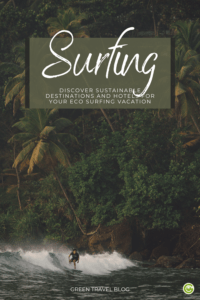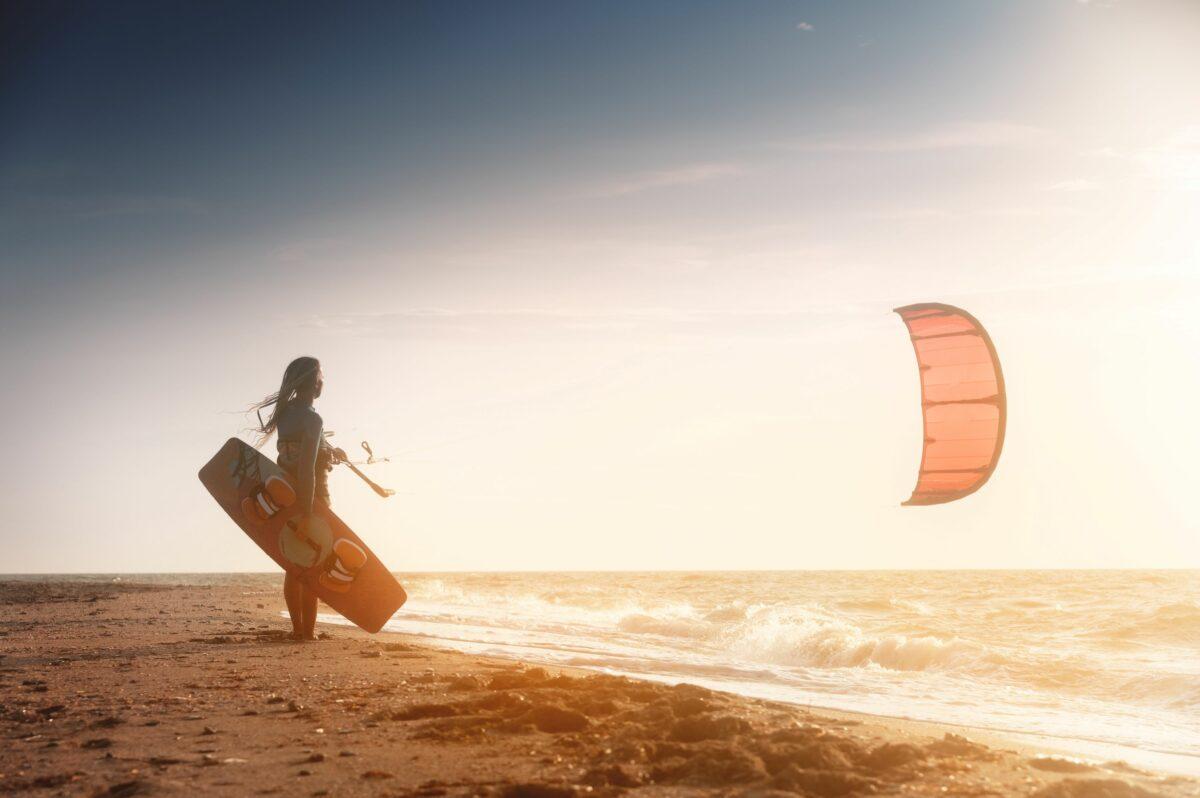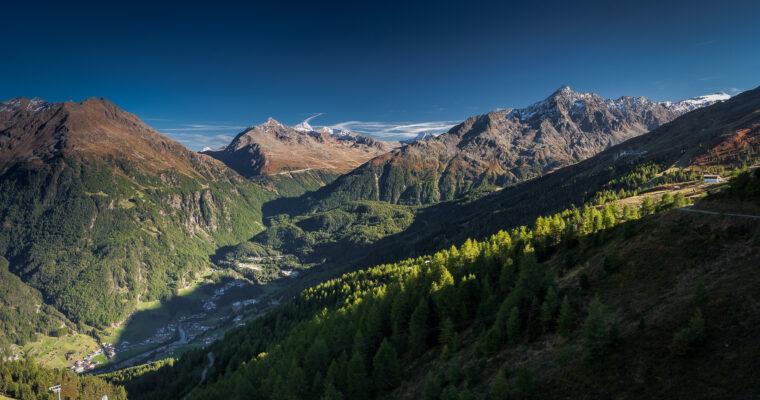Surfers love the ocean. Naturally, it’s where they practice their favorite hobby. But they also get accused of a lot of things: They scare away birds, disrupt ecosystems, create litter, travel by plane all the time, and (according to SPIEGEL) even leave their own “wave of mineral oil” behind. But is it all true? We take a closer look and show you how to make the sport ( with and without sails or kites) eco-friendly.
Studies show that surfers are more environmentally conscious than non-surfers
First, we want to advocate for surfers. As a global community, surfers are more environmentally conscious than other athletes. Or at least they consider themselves to be predominantly “green”, as this Norwegian study from 2021 shows. A full 69% participate in beach clean-ups and 50% say they eat little (or no) meat. However, only 23% are willing to avoid air travel, which brings us to the first argument against surfers.
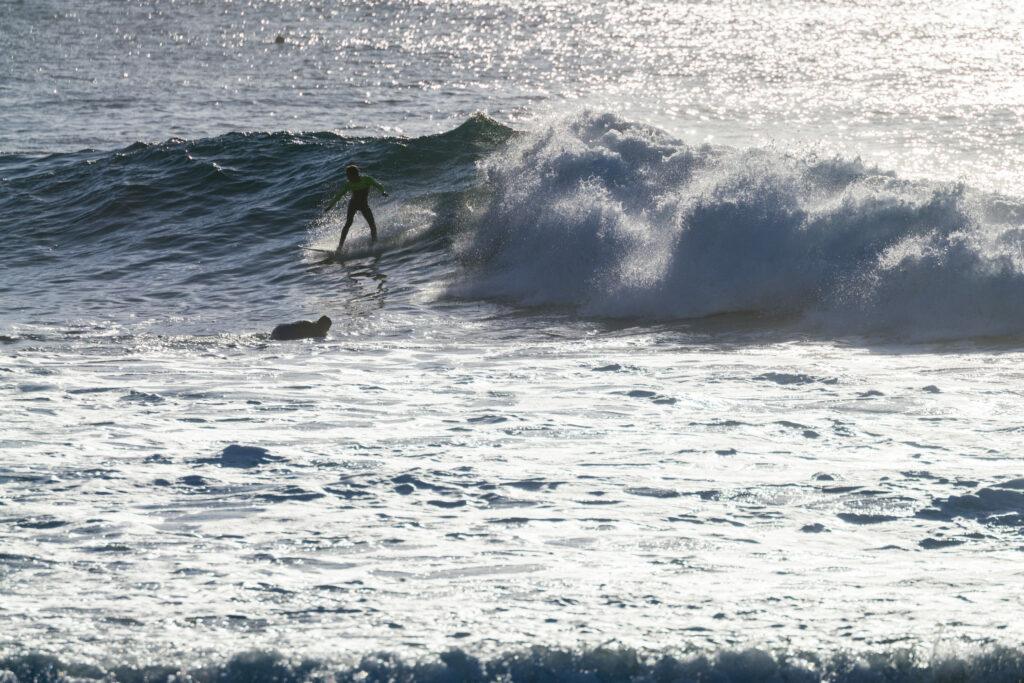
Problem #1: Air travel
For big waves and perfect conditions, most people go where they can find them. And for most people, that’s not right around the corner… Unfortunately, there is currently no real alternative to air travel for long-distance travel. However, as we discussed in our article “Are we still allowed fly?”, tourism also has a socio-economic aspect in many countries. Surf tourists also contribute to the national economy – and therefore to the global distribution of wealth.
However, you should be aware that it does not always have to be the waves of a distant ocean, but there are also surf beaches that you can reach (e.g. in Europe) by e-van or ride-sharing.
If you do choose to fly, you can support climate projects based on the CO2 emissions you produce. The World Surf League, for example, has been involved since 2018 and supports certain climate projects according to the emissions caused by their flights. As a private individual, you can offset your emissions with the compensation provider atmosfair (of course, only if you have done everything possible to avoid emissions). We recently took a closer look at the organization and can recommend it with a clear conscience!
Problem #2: Surfing equipment
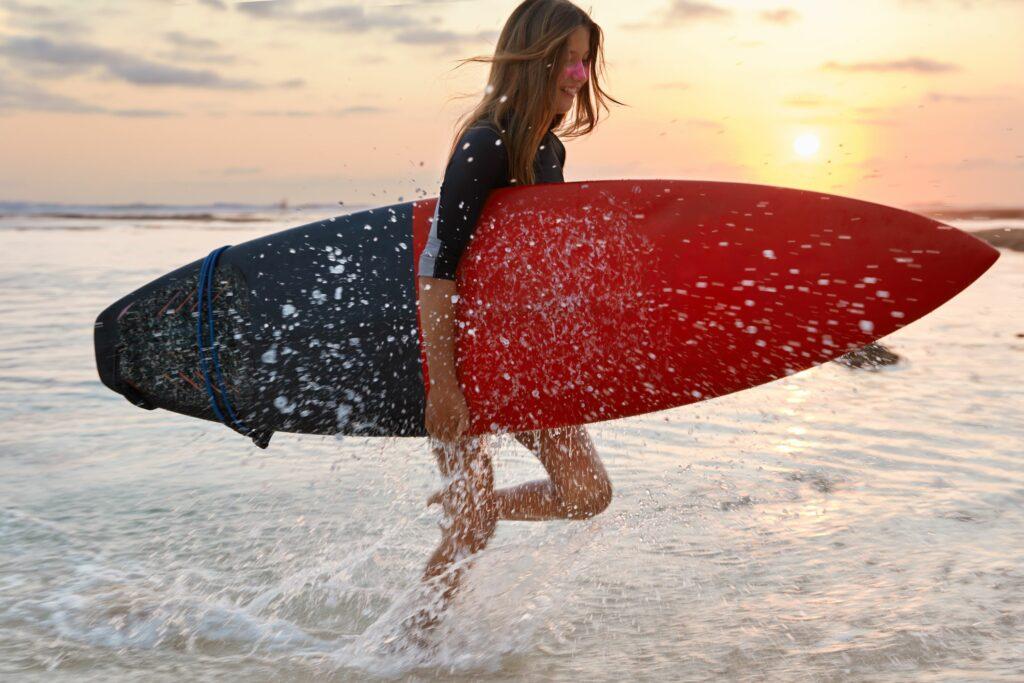
Like any sport, surfers need equipment. As you probably know, the basic equipment consists of:
- Surfboard (+ sail or kite)
- Line
- Wax
- Wetsuit
- Fins
- Rash Guard
- Other small items (earplugs, drybag, etc.)
As with most water sports, this equipment is typically made from 100 percent plastic. However, there are some manufacturers that specialize in sustainable surfboards and clothing. For example, there are boards made from wood (although the core is still plastic foam) and wetsuits made from recycled neoprene.
Links to sustainable surf shops (not a cooperation, just a personal recommendation) can be found at:
- EcoSurf Shop
- Langbrett
- Saltwater-Shop
- Wau Eco Surfboards (aus München)
Alternatively, you can rent your surf equipment, which is the best ecological choice. This doesn’t just apply to the board, but to all the equipment. Especially if you are just starting out and are not sure how often you will practice the sport, you should definitely consider renting or buying used equipment.
Issue #3: Sensitive water areas and ecosystems
Windsurfers and kitesurfers, in particular, who also use lakes and inland waterways, can encroach on sensitive water areas and disturb waterfowl.
In our blog article on sustainable watersports, we highlighted eight important rules for protecting aquatic animals, plants and their habitats. The most important is to avoid designated protected areas altogether.
The Wadden Sea in the North Sea will have new rules for water sports as of 2023. Kitesurfing will only be allowed in specially designated zones. As reported by NDR, the rules are welcomed by the surfers themselves and will be adhered to..
Controversial study on the environmental impact of kitesurfing
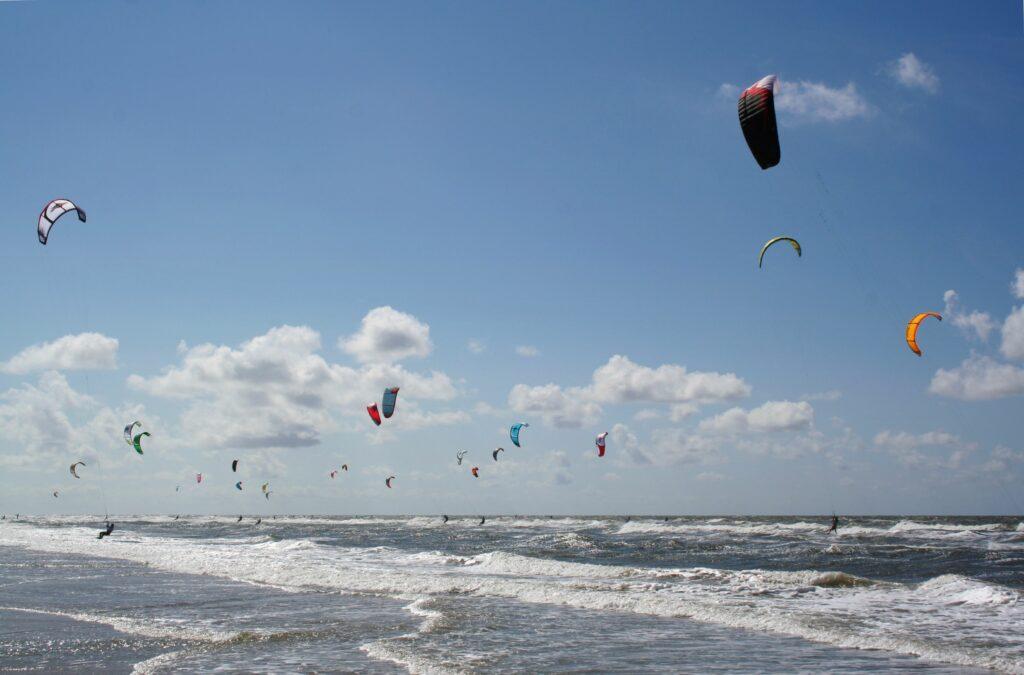
In 2016, the state of Lower Saxony conducted a study on the environmental impact of kitesurfing. The study concluded that while kitesurfing has a “frightening effect” on birds, it is no greater than for other people and their hobbies such as horseback riding, walking, kite flying, etc. The state considers the designated protection zones to be entirely adequate.
However, the designated protection zones do not go far enough for NABU. Kitesurfers’ kites fly at a height of 30 meters and usually travel at 30 to 40 km/h (the top speed for professional kitesurfers is as high as 100 km/h).
The Wadden Sea, which is unique in the world, contains important bird migration routes and sensitive breeding grounds. Kitesurfing should only be allowed in special areas at the back of the Wadden Sea islands – towards the open North Sea.
👉 If you want to go kitesurfing in the North Sea, find out in advance about the designated areas, special times (breeding and migration) and stick to them.
Sustainable surf vacations at these eco accommodations – our recommendations
If you want to surf sustainably, you should not only choose the right beach and protected areas, but also the right accommodation. After all, it’s no use doing everything you can to minimize your impact during the day if your hotel uses a lot of single-use plastic or worse, exploits the local environment, right?
#1 Summit Lodge Pfunds – Kitesurfing and windsurfing on Lake Reschen in South Tyrol
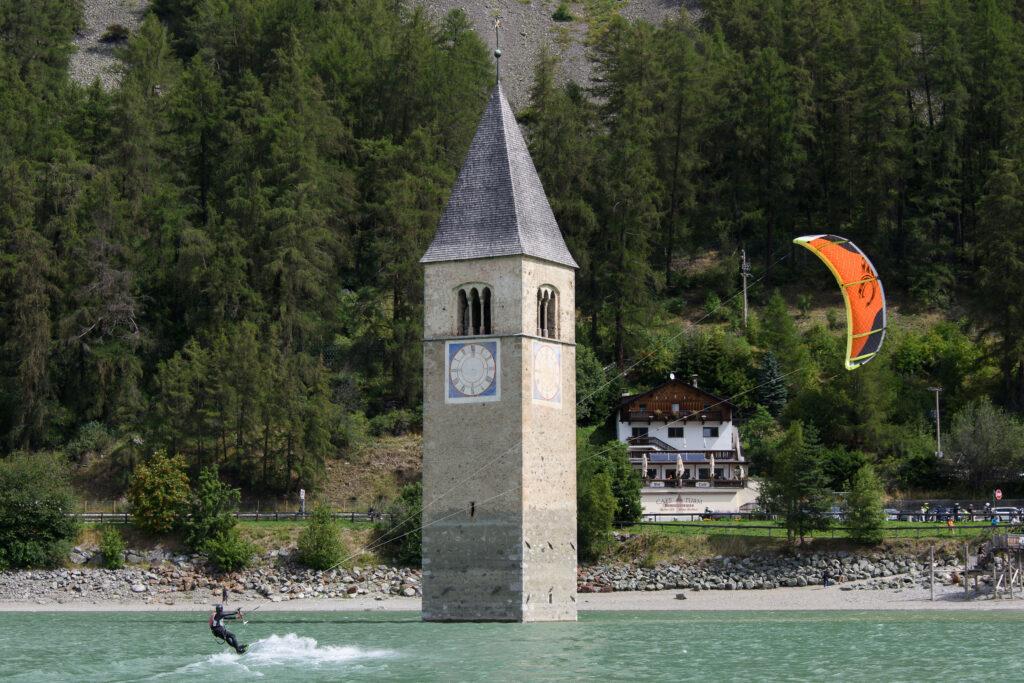
If you want to learn how to kitesurf, there are several kitesurfing schools on Lake Reschen in South Tyrol, where you can also rent the necessary equipment. Lake Reschen is a reservoir and combines optimal wind conditions with a fantastic alpine panorama – an absolute hotspot for kite and windsurfers!
Our Green PearlsⓇ partner, Summit Lodges, is located in Pfunds in Tyrol, Austria. From here it takes about an hour by public transportation to get to Lake Reschen. The sustainable lodges are perfect for families traveling together. There is space for six people, as well as a private terrace, balcony, and even a private sauna for the evening hours.
#2 Lifestylehotel SAND at the Baltic Sea – Windsurfing at Timmendorfer Strand
If you want to spend a sustainable beach vacation at the Baltic Sea, Lifestylehotel SAND is perfect. It is an adults-only hotel where a relaxed atmosphere and environmentally friendly facilities are important.
The hotel is located directly on Timmendorfer Strand, in the second row from the sea, so it is only a few minutes from the beach. Several surf schools rent equipment. In general, the Baltic Sea in front of the popular beach is mainly suitable for windsurfing and stand-up paddling. Kitesurfing is only possible in certain wind conditions and regions.
#3 OCÉANO Health Spa Hotel – Surfing in Tenerife in the Atlantic Ocean

In the north of Tenerife, where our Green PearlsⓇ partner, the OCÉANO Health Spa Hotel is located, you will find optimal surfing conditions. The health-oriented hotel, with daily yoga classes, sits right on the coast, and because the saltwater pools are enclosed seawater pools, there is direct contact with the Atlantic Ocean. From the hotel, you can watch the surfers every day, go surfing yourself, or visit one of the local surf schools.
While beginners can venture into the sea in the summer, it is mainly professional surfers who travel here in the winter. The high Atlantic waves are a perfect challenge for them.
#4 Casa León Royal Retreat – Surfing in Gran Canaria
Surfing and windsurfing are also very popular on the Canary Island of Gran Canaria. The waves are not as high as in Tenerife and the water temperatures are warmer, with sandy beaches.
While the surf schools and equipment rentals are right on the beach, our Green PearlsⓇ partner Casa León Royal Retreat is tucked away inland. The family-run, sustainable boutique hotel is a tranquil oasis set in a large garden with native plants and offers a great balance to the beach action. The hotel’s complimentary shuttle service will take you to Maspalomas Beach several times a day.
Surfing is healthy
According to a 2022 study from Spain and Saudi Arabia, surfing (along with other non-motorized water sports such as rowing and canoeing) has a number of health benefits for you. According to the study:
- improved quality of life (through overall health and well-being)
- better sense of direction
- positive influence on the psyche through leisure activities on the water. “Blue rooms” would promote feelings of “calm” and “revitalization”.
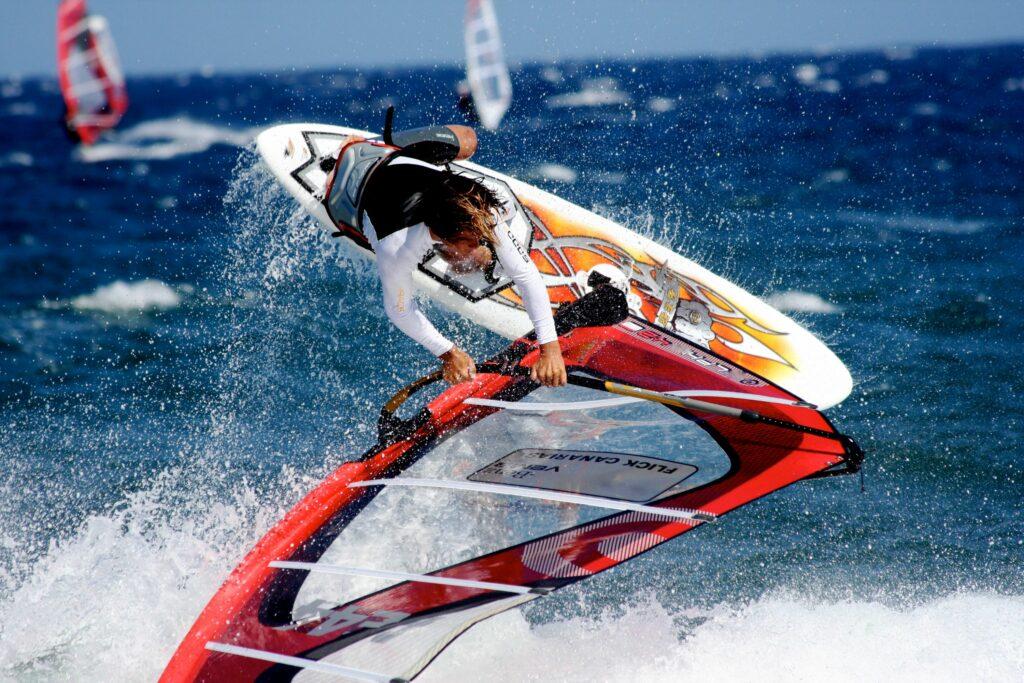
Conclusion: Surfing is quite eco-friendly
As you have seen, surfing is relatively eco-friendly. Or at least you can make it quite environmentally friendly. In particular, open-water surfers do not harm the ocean and its inhabitants, and as a community, they even try to be part of the solution by participating in ocean clean-ups and adopting sustainable lifestyles.
When windsurfing and kitesurfing on lakes and in the Wadden Sea, you have to be careful not to disturb the ecosystem. This is especially true for the 30 meter high stunt kites used for kitesurfing, which, according to NABU, disrupt the flight of birds.
Environmentally friendly surfing
For the sake of the environment, we also recommend that you pay attention to small details such as environmentally friendly surf wax and sunscreen that does not harm coral. It is the environmental awareness of individual surfers and the global surf community that has led to the growing popularity of eco-products and eco-accommodation.
Save the article to plan your next sustainable surf vacation!
